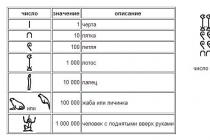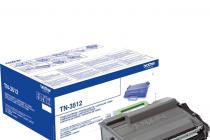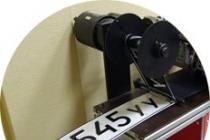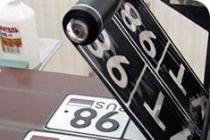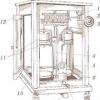When battery stacks operate in a buffer or cyclic mode, as well as when expanding such systems, an uneven distribution of electrical energy output is possible, which leads to a faster aging of the battery. How to properly equalize the battery charge, read this article.
Periodic equalization electric charge batteries in the system is a necessary process to ensure that the equipment functions correctly. If several batteries are connected in a circuit, imbalance can occur over time - a noticeable change in the voltage of individual batteries. To avoid this, it is recommended to rebalance every six months. It is usually carried out using increased voltage for twenty-four hours. You can find out the specific voltage from the battery specification on our website, see the data on the manufacturer's website, or check with the seller.
Multilevel systems - a brief description and purpose
Systems using multiple rechargeable batteries, are widely used in everyday life and at work. About schemes for connecting batteries to multi-level systems. Here it must be said that they are very useful for long-term provision of uninterrupted power supply to heating boilers, as well as for creating "green" energy systems operating from solar panels and wind generators. Indeed, besides the fact that it is necessary to produce electricity, it must be accumulated and stored somewhere else. It is for these purposes that systems of several storage batteries are needed, with the help of which a system of any capacity and voltage can be assembled from 12-volt batteries.
As mentioned above, during long-term operation, problems arise associated with the unbalance of the battery, then we will talk about this in more detail.
In order to avoid imbalance in the charge in new batteries, it is recommended to buy at once all batteries of the same manufacturer, of the same series, type and capacity with the same release date. In case of violation of these rules or expansion of the system - equalization of the battery charge must be performed!
If during the system service uninterruptible power supply there is a need to expand in capacity, then the most ideal option would be to choose an additional battery based on the above requirements for no more than a year in the difference in release date.
The fact is that a year after the operation of such a system, irreversible processes can occur in deep-discharge lead-acid batteries and their normal joint operation is not guaranteed. Those. a new battery can be damaged by older ones. If there is a significant difference in the production date of a year or more, the manufacturer's after-sale warranty for a new battery may be lost!
Imbalance - what it is and how to deal with it
From time to time, in all systems using batteries with a series, parallel or mixed type of connection, a charge imbalance occurs. Because of it, there is a deterioration in the performance of batteries, a decrease in capacity and failure of individual batteries before the passport period.
The problem is that all batteries are slightly different from each other, even if they are the same brand of batteries. When creating a battery pack, these differences can be amplified. Suppose the system has a battery with a resistance slightly higher than that of the neighboring ones. Naturally, when charging, the voltage on it will be slightly higher, the protection against increased voltage... During the release of electricity, the voltage of this battery will be the lowest, as well as its capacity. All this leads to the fact that the resource of the entire system will not be fully used. The result is degradation and strengthening of the defect over time. The weak link will degrade the performance of the entire battery pack. You can, of course, buy another battery, but this is not a panacea. What if the batteries are relatively new? And the cost is not cheap.
There are two ways to equalize the battery charge:
- Passive;
- Active.
The first method uses bypass circuits that dissipate energy. These devices can be installed in the UPS system, or in a separate microcircuit. Most often, this method is used in budget equipment. Almost all of the surplus electricity from a battery with a superior charge is converted and dissipated - this is the main limitation of the passive method. It shortens the life of the system without charging.
With an active balancing method, inductance is used to transfer electricity from a battery with a higher charge to weak batteries, therefore, the losses are not high. Due to this, the active method is much more effective than the passive one. But you still have to pay extra for quality, active equipment is more expensive.

Equalizing battery charge - practice
A battery equalization system is essential for Maintenance Battery with a serial connection type, when charging them from a single source. Batteries, when connected in series, form a single circuit or string. There may be several of them, depending on the nature of the system. The equipment is capable of regulating currents on individual batteries in several circuits at the same time.
The system consists of a controller that is responsible for charge regulation. It connects to the circuit's common power source. There are also separate battery-mounted sensors. This equipment is switched using a special loop.
Batteries in one circuit must be of equal capacity, otherwise the equipment will not cope with the task of balancing the charge on the batteries. The greater the difference in capacitance characteristics, the more charge and discharge cycles will be required to equalize the charge of the batteries.
How the charge balancer works
The controller analyzes the voltage and starts if it increases. The system calculates the average and, according to special loops, takes information from each individual battery. If the battery voltage exceeds average, the controller issues a command to compensate the load. If it is lower, the load is removed. These actions are tied to charge-discharge cycles, and, with each new cycle, the voltage is brought to average.
If the indicator of the total electric voltage does not increase within three working hours, then the controller signals that the work is completed and issues a command to disconnect the sensors on the battery. But, the analysis of electrical voltage does not stop.
All batteries are equipped with a voltage controller. It is best to do this next to the contacts, then connect plus to plus, minus to minus. When installed correctly, the sensor blinks. If there is no signal, either it was connected incorrectly, or the battery is defective. Through the COM port, the controller can output information on each battery to a personal computer.
In addition, the controller signals when the battery voltage drops or rises, below 10.5 Volts and above 15 Volts.
conclusions
Equalizing battery charges is a necessary technical measure. It increases the safety of battery use and increases their service life. Modern battery balancing controllers are testing technical condition each battery and make it possible to use the system, minimizing losses. In general, this is useful for safety reasons and ensures reliable and uninterrupted operation of the equipment.
Category: Charger support Published on 05/04/2016 12:06Most stationary batteries use a lead-acid electrochemical system that requires some maintenance, including an equalizing charge. The periodic application of equalizing charge equalizes the characteristics of all cells to the same level by applying a charging voltage of 2.50 V per cell, which is about 10 percent higher than usual.
The equalizing charge is nothing more than a deliberate recharge to remove lead sulfate crystals from the plates, which accumulate over time. If you do not monitor the battery status, the processes sulfation may reduce the overall capacity or even damage the battery. The equalizing charge also fights against acid stratification- a condition in which the acid concentration at the bottom of the battery becomes higher than at the top.
Experts recommend making a maintenance equalization charge once or twice a year. The best method to learn about its need is to apply full charge in saturation mode, with further comparison specific gravity each cell of a flooded lead-acid battery using a hydrometer. If the difference between the specific gravity of different elements is more than 0.030, then this indicates the need to use an equalizing charge.
During the equalization charge, check the specific gravity of the cells every hour and do not stop charging until the density stops increasing. The termination of the increase in density will indicate that no further improvements in the battery are already possible, and further charging can only do harm.
The battery being charged should be kept in a cool place and under close scrutiny for excessive heat and gassing. Moderate gassing is normal, but in any case, the battery must be charged in a ventilated area, since only 4% hydrogen concentration in the air is already explosive.
There is no general agreement on the feasibility of applying an equalizing charge to VRLA and other sealed batteries. Some manufacturers recommend that these batteries equalize on a monthly basis for 2-16 hours. But it should be remembered that overcharging of sealed batteries leads to excessive gas formation and actuation of the 34 kPa valve, as a result of which electrolyte depletion can occur.
Not all chargers have an equalization function. Such a charge should not be carried out with a device not intended for this purpose.
The same float current, even at the optimum float voltage, may not be sufficient to keep all battery cells fully charged. This is due to differences in the self-discharge of individual elements.
To bring all AB cells to a fully charged state and to prevent sulfation of electrodes, it is necessary to carry out equalizing charges with a voltage of 2.30 ÷ 2.35 V per cell until the steady-state value of the electrolyte density in all cells is 1.20 ÷ 1.21 g / cm3 at a temperature of 20 ° C. Equalizing charge is carried out according to the program. An equalizing charge of the battery must be carried out by the person responsible for the operation of the battery.
For branded batteries, the need, frequency and conditions for performing equalizing charges are determined in accordance with the technical documentation of suppliers or manufacturers.
The frequency of equalizing charges and their duration depend on the condition of the battery and should be at least once a year with a duration of at least 6 hours. On those AB, where, according to the operating conditions of the electrical installation, the float voltage can be maintained only at the level of 2.15 V per cell, equalizing charges must be carried out quarterly
If during the control the deviation of the voltage across the AE exceeds the average value by ± 0.05 V, then it is necessary to additionally check the density of the electrolyte in this cell (and, if necessary, correct it). If the AB contains single cells with low voltage and low electrolyte density (lagging batteries), then an additional equalizing charge must be carried out for them from a separate rectifier device.
Equalizing charge is produced without taking the battery out of operation. The charger is switched on according to the charging scheme for all elements (main and terminal). The rated voltage on the DC buses is maintained by switching the control buses to the 100th element position. To equalize the charge current, it is necessary to connect an additional discharge resistance between 100m and the last element (RH1).
In the event that the battery has additional elements, then it is necessary to connect an additional discharge resistance in parallel to these elements (Rn2). It is possible to use one adjustable resistance, in normal mode connected between 108-120 el., Which is connected to 100 - 120 email
Check discharge AB
The control discharge of the AB at the substation is carried out in order to determine its actual capacity with a current of 10 or 3 hours of discharge. The decision to carry out a control discharge is made after analyzing its condition and operability based on the results of inspections, testing by an impulse current, the presence of a significant number of lagging elements, the presence of unexplained reasons for failures to turn on oil switches. The control discharge is performed by the person responsible for the operation of the AB, in the presence of an approved application and in accordance with the program approved by the chief engineer of the MES.
Before the control discharge of the AB, it is necessary to make an equalizing charge of the AB. Before starting the discharge, it is necessary to record the discharge date, voltage, electrolyte density of each AE and the temperature in the control elements.
The depth of discharge must be strictly controlled by two parameters: voltage and density of the electrolyte. If the control discharge is carried out with a current of 3 or 10 hours of the discharge mode, then in this case the discharge should stop when at least one element of the voltage reaches 1.8 V. When discharging with low currents, the discharge should stop:
· When the voltage drops to 1.8 V at least on one element;
With a decrease in the density of the electrolyte to a value of c = 1.15 g / cm3 (by 0.03h0.05 g / cm3 against the initial density at the beginning of the discharge)
· When removing the nominal capacity of a 10-hour discharge mode.
When discharging, it is not allowed to subtract from the battery a capacity greater than that guaranteed for this regime discharge. During the discharge on the control and lagging AEs, the temperature and density of the electrolyte should be measured in accordance with Table 2.
Table No. 2 Scope of required measurements at battery discharge
At the end of the discharge, it is necessary to measure and record the voltage, temperature and density of the electrolyte, as well as the voltage between the poles of the AB and between each pole and "ground" on all AB cells. Take electrolyte samples from control elements for chemical analysis and check the content of impurities in the electrolyte. After the first year of operation, the electrolyte analysis must be performed from all AB cells.
The value of the discharge current must be the same every time. The results of measurements during control discharges should be compared with the results of measurements of previous discharges. Their values should not differ by more than 10%.
If, during the control discharge, it turns out that the capacity of the AB is significantly different from the nominal, it is necessary to check the capacity of the electrodes using a cadmium electrode and, depending on the results of the check, outline measures to restore the capacity of the AB.
Lead acid battery types
At the moment, the following types of batteries are most common on the market:
- SLA (Sealed Lead Acid) Sealed Lead Acid or VRLA (Valve Regulated Lead Acid) Valve Regulated Lead Acid. Manufactured using standard technology. Due to the design and materials used, it does not require checking the electrolyte level and adding water. They have poor cycling stability, limited low-discharge capability, standard inrush current, and fast discharge.
- EFB (Enhanced Flooded Battery) The technology was developed by Bosch. It is an intermediate technology between standard and AGM technologies. Such batteries differ from standard ones by higher resistance to cycling, and improved charge acceptance. They have a higher starting current. Like SLA \ VRLA, there are limitations to work at low charge.
- AGM (Absorbed Glass Mat) At this moment best technology(in terms of price / performance ratio). Cycling resistance is 3-4 times higher, fast charge. Due to its low internal resistance, it has a high starting current at a low state of charge. Water consumption close to zero, resistant to electrolyte stratification due to absorption in the AGM separator.
- GEL (Gel Electrolite) A technology in which the electrolyte is in the form of a gel. Compared to AGM, they have better resistance to cycling, greater resistance to electrolyte separation. The disadvantages include high cost, and high requirements for the charge mode.
There are several more technologies for the manufacture of batteries, both associated with changing the shape of the plates and specific operating conditions. Despite the difference in technologies, the physicochemical processes occurring during charging and discharging of the battery are the same. Therefore, the charge algorithms different types the batteries are almost identical. The differences are mainly related to the maximum charge current and end-of-charge voltage.
For example, with a charge of 12 volt battery by technology:
Determining the state of charge of the battery
There are two main methods for determining the state of charge of a battery, measuring the density of the electrolyte and measuring the open circuit voltage (OVT).
NRTs is the voltage on the battery without a connected load. For sealed (not serviced) batteries, the state of charge can only be determined by measuring the NRC. It is necessary to measure the NRC not earlier than 8 hours after stopping the engine (disconnecting from the charger), using a voltmeter with an accuracy class of at least 1.0. At a battery temperature of 20-25 ° C (as recommended by Bosch). NRC values are given in the table.
(for some manufacturers the values may differ from those given) If the state of charge of the battery is less than 80%, then it is recommended to charge.
Battery charging algorithms
There are several of the most common battery charging algorithms. At the moment, most battery manufacturers recommend the CC \ CV (Constant Current \ Constant Voltage) charging algorithm.

This algorithm provides a fairly fast and "gentle" battery charging mode. To exclude a long-term stay of the battery at the end of the charging process, most chargers switch to maintaining (self-discharge current compensation) voltage on the battery. This is called a three-stage algorithm. The graph of such a charging algorithm is shown in the figure.
The indicated voltage values (14.5V and 13.2V) are valid when charging SLA \ VRLA, AGM batteries. When charging GEL batteries, the voltage values must be set to 14.1V and 13.2V, respectively.
Additional algorithms for battery charging
Precharge In a highly discharged battery (NRC less than 10V), the internal resistance increases, which leads to a deterioration in its ability to accept a charge. The precharge algorithm is designed to "swing" such batteries.
Asymmetric charge To reduce sulfation of the battery plates, an asymmetric charge can be carried out. With this algorithm, the charge alternates with the discharge, which leads to the partial dissolution of sulfates and the restoration of the battery capacity.
Equalizing charge In the process of battery operation, the internal resistance of individual "cans" changes, which, in the course of charging, leads to an uneven charge. To reduce the spread of the internal resistance, it is recommended to carry out an equalizing charge. In this case, the battery is charged with a current of 0.05 ... 0.1C at a voltage of 15.6 ... 16.4V. The charge is carried out for 2 ... 6 hours with constant control of the battery temperature. Do not equalize sealed batteries, especially with GEL technology. Some manufacturers allow such a charge for VRLA \ AGM batteries.
Determining battery capacity
During use of the battery, its capacity decreases. If the capacity is 80% of the nominal, then such a battery is recommended to be replaced. The battery is fully charged to determine the capacity. Allow to settle for 1 ... 5 hours and then discharge with a current of 1 \ 20C to a voltage of 10.8V (for a 12-volt battery). The number of ampere hours delivered by the battery is its actual capacity. Some manufacturers use other values of the discharge current to determine the capacity, and the voltage to which the battery is discharged.
Control-training cycle
To reduce sulfation of the battery plates, one of the methods is to conduct control training cycles (CTC). KTC consist of several successive charge cycles followed by a discharge with a current of 0.01 ... 0.05C. During these cycles, the sulfate dissolves and the capacity of the battery can be partially restored.
- Carry out an external inspection of the battery. The top surface of the battery and terminal connections must be clean and dry, free from dirt and corrosion.
- If there is liquid on the top surface / rechargeable batteries, there may be an excess of liquid filled. If there is liquid on the surface of the gel or AGM battery, it means that there is too much battery charge, and its performance and service life will be reduced.
- Check battery cables and connections. Replace damaged cables. Tighten loose connections.
Cleaning
- Make sure all protective caps are securely attached to the battery.
- Clean the top surface of the battery, terminals and connections with a cloth or brush and a solution of baking soda and water. Do not allow cleaning solution to get inside the battery.
- Rinse with water and dry with a clean cloth.
- Apply a thin coat of petroleum jelly or terminal protector available from your local battery supplier.
- Keep the area around batteries clean and dry.
Topping up water (ONLY batteries with liquid electrolyte)
Do not add water to gel or AGM batteries, as they do not lose water during use. In / bulk accumulators, water must be added periodically. The frequency of topping up depends on how the battery is used and the operating temperature. New batteries should be checked every few weeks. to determine the frequency of water topping up for a specific application. Batteries generally need to be topped up more frequently as they age.
- Fully charge the battery before adding water. Only add water to discharged or partially charged batteries if the plates are visible. In this case, add just enough water to close the plates, then charge the battery and continue with the water topping process described below.
- Remove the protective caps and turn them over to prevent dirt from getting on the inner surface. Check electrolyte level.
- If the electrolyte level is significantly higher than the plates, then it is not necessary to add water.
- If the electrolyte level barely covers the plates, add distilled or deionized water to a level 3 mm below the vent hole.
- After topping up the water, put the protective caps back on the battery.
- Tap water can be used if the contamination level is within acceptable limits.
Charge and equalization charge
Charge
Proper charging is extremely important to get the most out of your battery. Both undercharging and overcharging a battery can significantly shorten its life. For proper charging, see the instructions that came with the equipment. Most chargers are automatic and preprogrammed. In some chargers, the user can set the voltage and current values. See Charge recommendations in Table.
- Make sure that Charger set to the correct program for liquid electrolyte, gel or AGM batteries, depending on the type of battery used.
- The battery must be fully charged after each use.
- Lead acid batteries (Wet, Gel and AGM) have no memory effect and therefore do not need to be fully discharged before recharging.
- Charge only in well-ventilated areas.
- Before starting charging, check the electrolyte level to make sure the plates are covered with water (only for batteries with liquid electrolyte).
- Before starting charging, make sure that all protective caps are securely attached to the battery.
- Batteries with liquid electrolyte will give off gas (bubbles) before the end of the charging process, which will ensure correct mixing of the electrolyte.
- Do not charge a frozen battery.
- Avoid charging at temperatures above 49 ° C.
Scheme 4
Scheme 4 and 5

Equalizing charge (ONLY for batteries with liquid electrolyte)
Equalizing charge is an overcharge of a battery carried out on batteries with liquid electrolyte after they are fully charged. Trojan recommends performing an equalization charge only if the batteries have a low specific gravity, less than 1.250, or the specific gravity fluctuates over a wide range, 0.030, after the battery is fully charged. Do not equalize GEL or AGM batteries.
- Make sure the battery is a liquid electrolyte battery.
- Before starting charging, check the electrolyte level and make sure the plates are covered with water.
- Make sure all protective caps are firmly attached to the battery.
- Set the charger to equalization charge.
- During the equalizing charge, gas will evolve in the batteries (bubbles will float).
- Measure the specific gravity every hour. The equalizing charge should be terminated when the specific gravity stops growing.
ATTENTION! Do not carry out the equalization charge on gel or AGM batteries.


